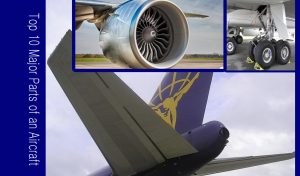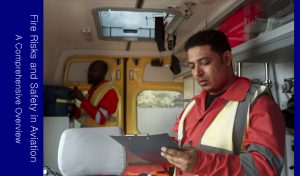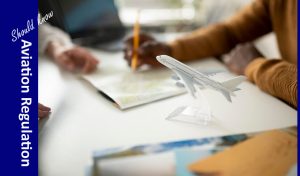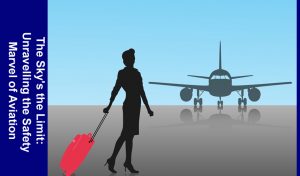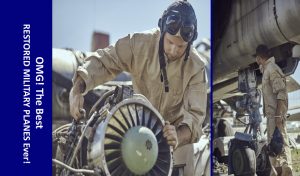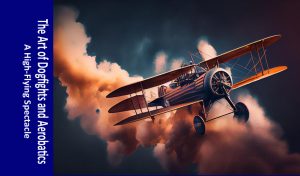Aerobatic records and achievements in aviation involve pushing the boundaries of what is bodily possible in terms of plane overall performance and piloting abilities. These facts and achievements show off the outstanding capabilities of each pilots and their aircraft. Here are a few splendid examples.
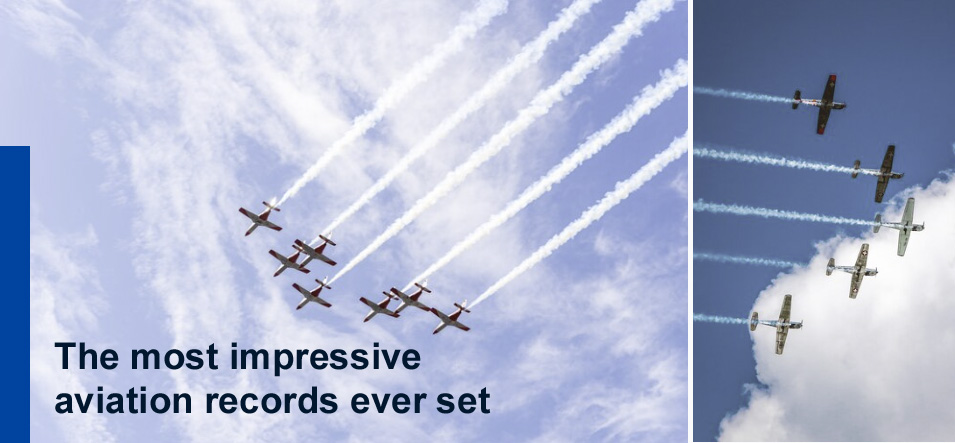
Highest altitude aerobatics
The highest altitude at which aerobatics have been performed is 37,850 feet, by the Red Arrows in 1995. This was achieved in a specially modified Hawk T1A aircraft.
Aerobatics at high altitudes is more challenging than at low altitudes, due to the reduced air density. This means that the aircraft has less lift and less thrust, and is more susceptible to stalling. Additionally, the pilot has to be more careful to manage their G-forces, as they are more likely to experience blackouts at high altitudes.
Despite the challenges, aerobatics at high altitudes can be a very impressive sight. The aircraft are able to perform the same maneuvers as at low altitude but with a much wider backdrop. This makes for some stunning aerial photography and videography.
Here are some other examples of high-altitude aerobatics:
- In 2006, the Breitling Jet Team performed a loop at 35,000 feet.
- In 2011, the Russian Knights performed a barrel roll at 33,000 feet.
- In 2016, the Patrouille de France performed a heart-shaped formation at 30,000 feet.
It is important to note that all of these aerobatic displays were performed by highly experienced pilots in specially modified aircraft. It is not safe for the average pilot to attempt aerobatics at high altitude.
Fastest aerobatics:
The fastest aerobatics are performed by purpose-built aerobatic aircraft, such as the Extra 330, the Sukhoi Su-29, and the Edge 540. These aircraft are designed to be lightweight and maneuverable, and they are powered by powerful engines.
The current world record for the fastest aerobatic aircraft is held by the Rolls-Royce Spirit of Innovation, which reached a top speed of 387.4 mph (623 km/h) in 2022. This aircraft is powered by an electric motor, and it is the fastest all-electric aircraft in the world.
Other notable aerobatic aircraft include the:
- Edge 540: This aircraft has a top speed of 426 kph (265 mph) and a roll rate of 420 degrees per second. It is a popular choice for aerobatic competitions and air shows.
- Sukhoi Su-29: This aircraft has a top speed of 450 kph (280 mph) and a roll rate of 400 degrees per second. It is a Russian-built aircraft that is known for its high performance and durability.
- Extra 330: This aircraft has a top speed of 430 kph (267 mph) and a roll rate of 420 degrees per second. It is a German-built aircraft that is known for its precision handling and excellent aerobatic capabilities.
It is important to note that these aircraft are not designed for commercial use. They are specialized aircraft that are flown by highly trained pilots.
Aerobatics can be a dangerous activity, and it is important to take all necessary safety precautions. Pilots should always wear a parachute and follow all safety procedures.
Most inverted flat spins in an aircraft:
The most inverted flat spins performed in an aircraft is 98, and was achieved by Spencer H. Suderman (USA) in Yuma, Arizona, USA on 20 March 2016. The record was attempted at Yuma International Airport/MCAS. Spencer is a certified aerobatics pilot.
An inverted flat spin is a type of spin in which the aircraft is upside down and rotating around a vertical axis. It is a very difficult maneuver to perform, and requires a high degree of skill and experience.
Suderman’s record-breaking flight lasted for over 10 minutes, and he was able to maintain control of the aircraft throughout the entire spin. He was flying a Sunbird S1X biplane, which is a highly maneuverable aircraft that is well-suited for aerobatics.
Suderman’s achievement is a testament to his skill as an aerobatic pilot, and to the capabilities of the Sunbird S1X biplane. It is a truly impressive feat, and one that is unlikely to be broken anytime soon.
Longest aerobatic sequence:
The longest aerobatic sequence is 14 minutes and 43 seconds, and was flown by Sergey Rakhmanin (Russia) at the 2016 World Aerobatic Championships in Bratislava, Slovakia. Rakhmanin was flying a Sukhoi Su-31 aircraft, and his sequence included a variety of difficult maneuvers, such as the Lomcevak, the Immelmann turn, and the Hammerhead.
To fly such a long aerobatic sequence requires a high level of skill and endurance. Rakhmanin had to carefully manage his energy levels and his G-forces throughout the flight. He also had to be very precise in his flying, as even a small mistake could have caused him to lose control of the aircraft.
Rakhmanin’s achievement is a testament to his skill as an aerobatic pilot and to the capabilities of the Sukhoi Su-31 aircraft. It is a truly impressive feat, and one that is unlikely to be broken anytime soon.
It is important to note that this is the longest aerobatic sequence performed in competition. There have been longer aerobatic sequences performed outside of competition, but these are not officially recognized. For example, in 2019, the Red Arrows performed a 25-minute aerobatic display at the Royal International Air Tattoo.
These are just a few examples of the many aerobatic records and achievements that have been set over the years. Aerobatic pilots continue to push the limits of flight, demonstrating incredible skill and courage.
In addition to these individual records, there are also many aerobatic competitions held around the world. These competitions test pilots’ skills in a variety of areas, including precision flying, artistry, and freestyle aerobatics.
Aerobatics is a demanding and challenging sport, but it is also incredibly rewarding. Aerobatic pilots experience the thrill of flight in a way that few others can. They also play an important role in advancing aviation technology and inspiring future generations of pilots.
